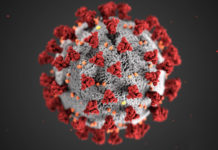GONZALES — Fifteen years ago on April 25 the Human Genome Project was completed. To commemorate that achievement, ARCpoint Labs of Monterey Bay Director Spenser Smith visited the Monterey County Free Libraries Gonzales Branch last Wednesday to celebrate National DNA Day.
“DNA is like the hard drive of life,” Smith said. “We all take that information for granted. It took a long time for people to understand how huge an idea this is.”
The history of DNA began in the Czech Republic in the 1850s with Gregor Mendel, who would breed peas with purple flowers and white flowers to get different offspring. Mendel found out that it was mathematically predictable to cross-breed the species of peas.
The next phase of DNA discovery, 70 to 80 years later, dealt with rats in labs. Scientists theorized that something within themselves was being passed down to the next generation, such as eye and hair color. They experimented with different pneumonia strains on the rats finding that if you mix a deadly pneumonia strain with a harmless strain the rats would die.
“We didn’t know what DNA was, we just knew that there was this stuff that you find in the certain part of the cell, and apparently it is the building blocks of life,” Smith said. “But, how do you read it and what does it look like?”
Between the 1930s and the 1950s, a race occurred to decode DNA. James Watson and Francis Crick were the scientists who took credit for the discovery of what DNA looks like. The discovery also took place April 25.
“They discovered the shape of DNA,” Smith explained. “You have these two strands, between the strands are base pairs, ATCG. It encodes all life.”
Rosalind Franklin and Maurice Wilkins were also important in the history of DNA. Wilkins was awarded the Noble Prize for discovering the structure of DNA. Franklin made strides in the understanding of molecular structures of DNA, RNA, viruses, coal and graphite. Franklin’s basic research was instrumental in discovering what DNA looks like.
The next phase was to look at humans themselves, decode the DNA and record it. Enter the Human Genome Project, a project to record the entirety of the human organism. Smith said the human genome is approximately 3 billion letters, which would fill about 6,000 books cover to cover.
“The main thing we learned from doing the Human Genome Project was how little we knew about the human genome and what we were getting ourselves into,” Smith said.
Among the things learned from the Human Genome Project was the number of genes humans have, 24,000. The number was a shock to the scientific community who thought that the more complex the organism the more genes it would carry. This theory proved incorrect as the organism that has the most genes was a Japanese flower, 50 times more than humans.
In the past few years, DNA has been used to figure out ancestry for family members wanting to learn where they came from.
The Human Genome Project can also be used to sequence every tumor of a cancer patient’s body. Figuring out how cancer tumors mutated allows doctors to treat exactly that cancer instead of killing all the cancer cells and healthy cells. The science of DNA is making progress in testing for bad side effects from drugs used as well.
A similar program was also held at the Greenfield Branch Library on April 21, and Soledad High School celebrated National DNA Day with a separate presentation for students.













